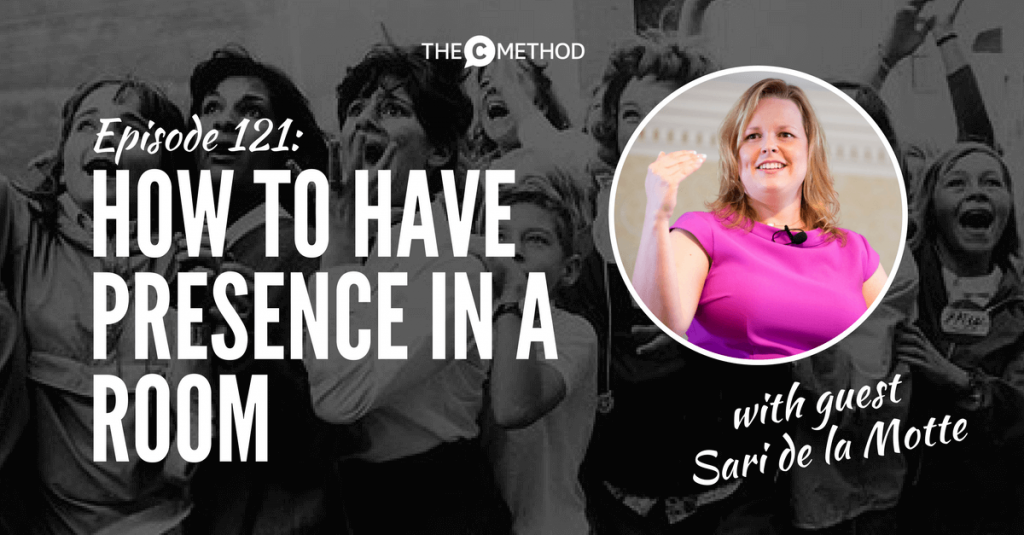Have you ever seen someone who has a powerful presence?
In other words: they walk into a room and people take notice. When they speak, people shut up and listen. And they project a sense of ease, poise, and self assurance. Maybe it’s the CEO of your company, your boss, or a speaker you saw at an event.
Now imagine if YOU could be that person.
How amazing would it feel? What sort of a leader would you be? What could you achieve? If you’re thinking: ‘That can’t be me, that’s not possible’, then get ready, because you’re about to discover that it IS possible, and my guest Sari de la Motte, is going to show you how.
Sari is the CEO and founder of FORTE, a communications consulting firm. Sari has done extensive training in nonverbal communications and, through her company, helps professionals craft and deliver compelling messages. Sari has a no-nonsense approach to communicating the difference between nonverbal communications and the “woo-woo secret language” that “body language experts” talk about.
Sari has lots of fantastic videos online, and one in particular caught my attention. In it, Sari talks about how you can have presence in a room, simply by changing your non verbal communication. So this is what I was interested to ask her about. In this conversation, you’ll learn the 4 main components of presence that Sari teaches to her clients, and how we can practice and incorporate them into our own professional lives.
Notes from the episode:
- How learning about non verbal communication changed the way Sari saw the world works
- The way we communicate non verbally has a huge impact on how we come across
- “Body language starts in the brain”
- The importance of acting ‘as if’: “You’ve got to act like you belong, then you’ll be treated like you belong”
- “We think that who we are comes down to what we know” – find out why this isn’t the case!
- Through our non verbals, we teach other people how to treat us
- How to have presence in a room: The 4 components:
- 1. Mind: you can’t be present if you’re not present. We’re afraid of silence. Have enough self trust that you’re going to know what the other person is going to say. The best speakers are conversational.
2. Body: This is how you communicate it. Are you authoritative or approachable?
3. Space: We (the audience) are aware of how much space YOU are aware of. Expand YOUR awareness of space.
4. Others: Have an eye on who you’re communicating to, and how are they reacting (ie engagement) - Why breathing is so important: we tend to hold our breath when we fear something. When you breath, you ground yourself: “Authenticity shows WHO you are. Breathing shows you HOW you are.”
- Discover the two sets of non verbals: authoritative and approachable, and when to use them.
- How can you start using these non verbal styles? You have to be in the mindset. You need to OWN it. That will make the body language more natural.
- When we communicate: “You’re either tending to the relationship or you’re dealing with the issue”
Links mentioned:
- Sari’s company FORTE (UPDATE SEPT 2018: Sari’s website is now https://www.saridlm.com/ Please check for new resources, they may not be the same as mentioned in the episode.)

Leave a Reply